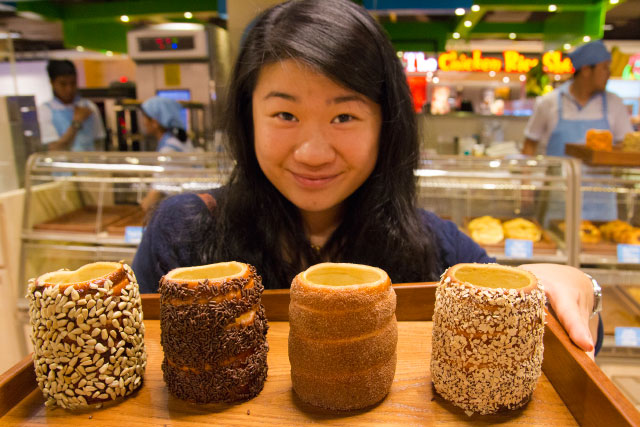How many bird species can you name? Living in Sabah for so many years, I took them for granted and could not name even 10 species. Until one day I saw a group of Japanese tourists were so excited to see a white-breasted waterhen (“ruak” in local language) in a smelly drain. When they were in a frenzy to photograph this ordinary bird, I realized I should view our birds differently.
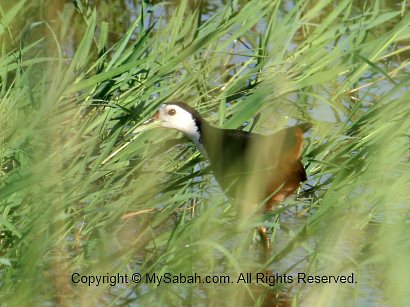
Above: photo of Ruak
Birds of Borneo
Borneo island has 664* species of resident and migratory birds, and 51* of them are endemic to Borneo, which means you can’t find them anywhere else. In fact, new species is still being spotted, for example, a new species Spectacled flowerpecker was discovered by bird guide Richard Webster in Danum Valley just last year.
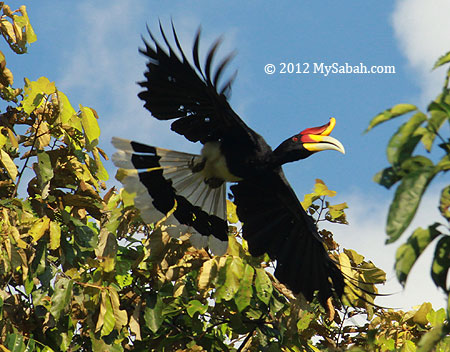
Above: Rhinocerous hornbill in flight
Birds are everywhere. With so many types of birds in our forest, mountains, islands, beaches, river and mangrove, birdwatching brings me more fun in traveling. Seeing them fly freely in the sky, I wonder why some selfish people want to lock them in small cages. For example, someone keep White-Crowned Shama as pet. This bird is endemic to Sabah and is a protected species, so it is illegal to trade them without a permit.
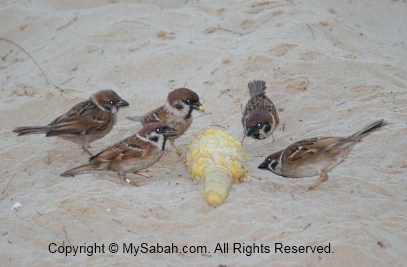
Above: There were only a few Eurasian Tree Sparrow in Sabah 50 years ago, now they are everywhere, like our illegal immigrants.
Let’s Start Birdwatching
Hardcore birdwatching is very technical, I am not an expert birder either, so I will not cover this in depth. As a quick start, a binocular (spec: 7×30, 8×40, or 10×40) and a guide book are enough. A telescope with angled eyepiece is a good alternative to binocular, because you do not need to look up high for long hours and stress your neck muscle. Only when you want to get serious in future, you could invest in high-end (expensive) birding gears such as hide.
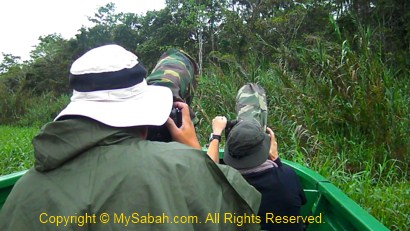
For good field books on birds of Borneo, personally I recommend “A Pocket Guide to the Birds of Borneo” (compiled by Charles M. Francis) for beginner as it is only RM30 and contains a lot of bird pictures. Other good books are “A Field Guide to the Birds of Borneo” (Susan Myers), “Phillipp’s Field Guide to the Birds of Borneo” (Quentin Phillipps) and “The Birds of Borneo” (B.E. Smythies). There will be a learning process to identify individual species but you will slowly pick up along. Listening to the bird songs and calls too, so next time you can identify what birds are around just by listening.
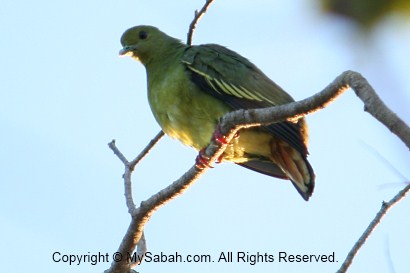
Birds have excellent eyesight and we are being watched instead, so a few common sense rules would help:
- Keep quiet and move slowly. Do not make noise.
- Wear clothing with colors and patterns that can blend well into the environment. Wearing bird costumes is not necessary.
- Hide yourself well. Make use of the landscape to hide. e.g. behind long grasses and shrub
- Birds also can smell. Do not wear perfume. Try to stay at “downwind” side. Odor-less insect repellent is available if you need it.
- Be patient. Stop for a while for every few minutes and scan the surrounding.
- Notepad and pencil to record what you see and hear for identification later. A camera will help.
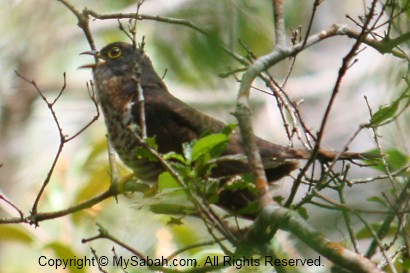
Above: Dark-Hawk Cuckoo in Kinabalu Park
Best Time
In general, early morning and late afternoon are the best times for birdwatching, except for nocturnal species. Between October and April, the winter season of Northern Atmosphere, you will have a good chance to see migratory birds, mostly water birds such as sandpipers and plovers, from North-East Asia and Siberia feeding in our wetlands.
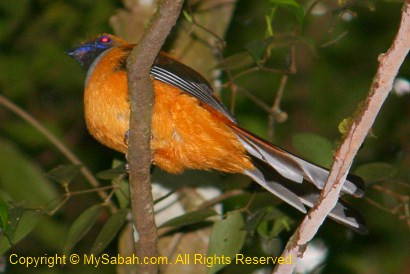
For sites with many visitors, like Tanjung Aru, birdwatching in early morning is more enjoyable, as there will be less busybodies come and ask how much your binocular costs. Last week I was photographing birds at the roadside of Likas Lagoon, all the cars were slow down to see what I was doing, almost causing a traffic jam. Sigh… Malaysians.
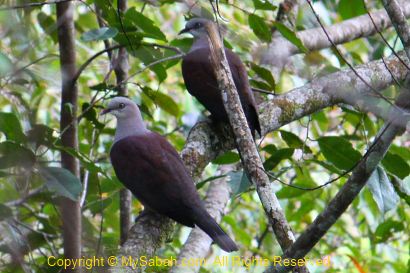
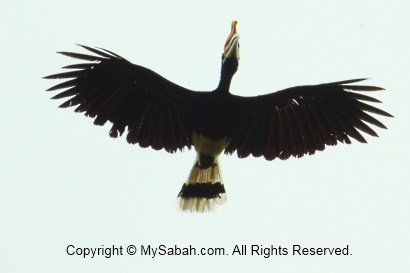
Birdwatching Sites
Now you know the right tools, attitude and timing. Next you need to know where to see birds. You need to do a bit of homework on the habitat of the birding sites by reading the guide books, so you know what to expect. For example, what you see in island will be different from highland. We are lucky because most birding sites are quite near and accessible.
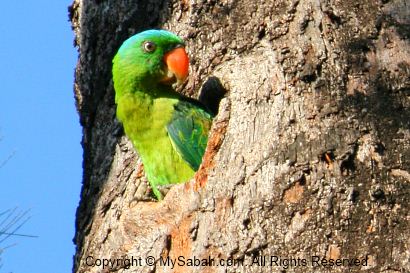
Above: Blue-naped parrot nests in tree hole of Tanjung Aru
Around Kota Kinabalu, you already can find hundreds of bird species. You can find Oriental Darters, Grey Herons, swamphens, etc. in Likas Lagoon. I would like to praise government for protecting this fresh water swamp. They do not flood the lagoon with salt seawater to clear the Water Hyacinth plants that blanket the lagoon. KK Wetland Centre has 135 species of birds (66% are residents) in their mangrove. Most are timid and hide themselves well, so do not expect to see them all in one trip. In Tanjung Aru Beach and Prince Philip Park, you can spot Blue-naped parrots and Dollarbirds easily.
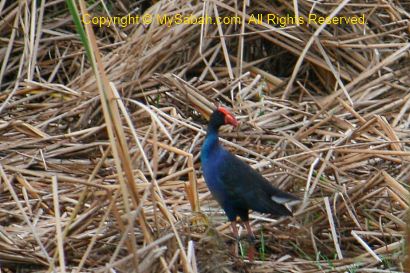
Above: Black backed Swamphen in Likas Lagoon
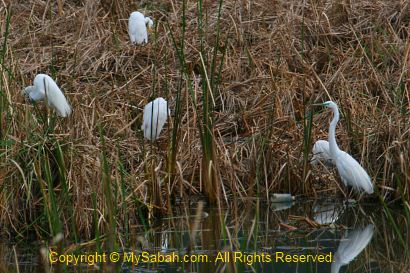
Above: great egrets in Likas Lagoon
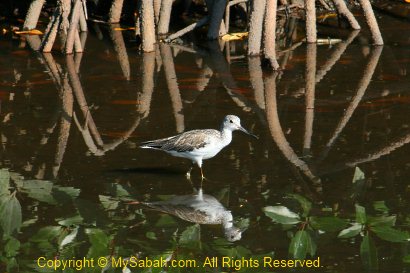
Above: Common greenshank in Kota Kinabalu Wetlands
Almost every cities and towns in Sabah have one or more great birding sites nearby, like the list below:
Sandakan: Kinabatangan, Rainforest Discovery Center (300 species, with 26 as endemic)
Ranau / Kundasang: Kinabalu Park (17 endemic montane species), Poring
Lahad Datu: Tabin Wildlife Reserve (all 8 species of hornbill), Danum Valley
Keningau: Crocker Range Park (see the world’s smallest raptor – White-Fronted Falconet)
Tambunan: Rafflesia Information Center
Beaufort: Klias Wetland, Pulau Tiga Park
Tawau: Tawau Hills Park
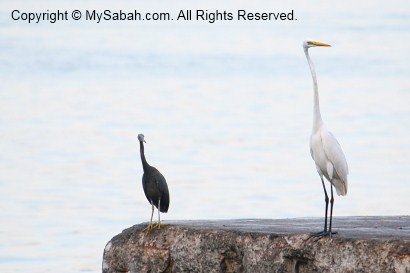
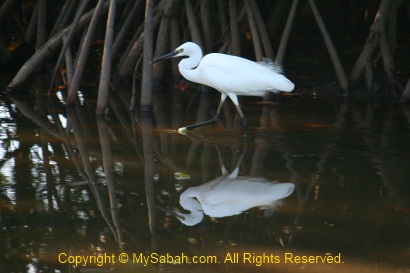
Some sites have observatory towers and canopy walk, please make use of them. Many birds such as Sabah’s iconic bird, Bornean Bristlehead, are active in canopy. For more info and interesting events on birdwatching, please visit the web site of Borneo Bird Festival at http://www.borneobirdfestival.com.
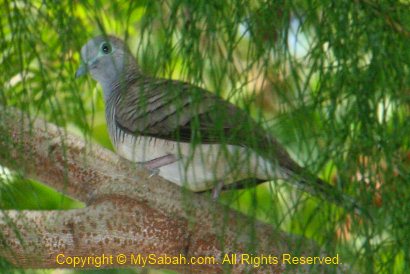
Birdwatching can be very addictive. Many birdwatching photographers got “poison” and buy the “Bazooka” long camera lens (which can be as expensive as a Kancil car). For newbie who is interested in bird photography, cheaper alternative such as compact camera with 20x optical zoom, digiscoping (attach compact camera to a telescope with adapter), or 40x-60x optical zoom handycam can produce acceptable photo quality for documentation. FYI, if you spot 400 bird species in Borneo, you can become a member of Borneo Bird Club 400, a prestigious achievement that money can’t buy.
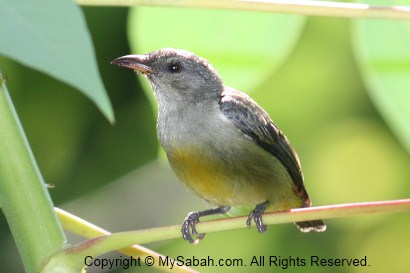
Tourism Potential
Foreign tourists pay thousand dollars and travel thousand miles to see our birds. These high-end tourists (usually rich birders equipped with Bazooka) are willing to pay US$100 to US$300 just to see one bird (of course the rare bird, not something like ruak). There are more than two million birdwatching enthusiasts in Britain alone, so this is a huge market for our tourism. And another reason to have this hobby since local “low-end” tourists like us also can enjoy.
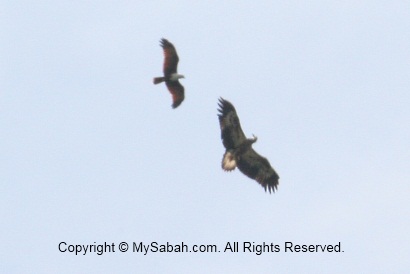
Above: Brahminy Kite challenges bigger white-bellied sea eagle
However, Sabah is short of tour guides who is expert in birdwatching, and we may need 500 bird specialist guides in the next 10 years for this niche market. If you start birdwatching now, who knows you might find a well-paid and high-demand career in short future. To offer better tourist experience, every tour guides should learn more about birds too. In a river cruise in Kinabatangan, it was so fun and satisfying to have a bird expert on our boat. She could name almost every bird and point out all the rare birds we saw. This is really an important skill and value-added service to spice up our nature tour.
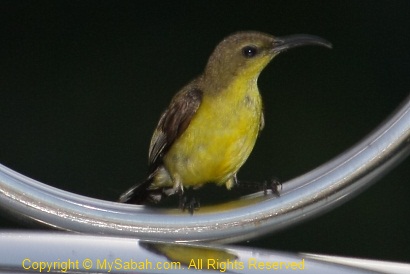
Due to the growing importance of birdwatching tourism, we should protect our environment and various ecosystems, which offer unique food web and habitat for our rare birds. Breeding birds in lab and release them to the wild is easier said than done and not a feasible solution. The older generation still remember in KK there was a famous “eagle hill”, with a large number of raptors. They were gone forever after the hill was clear to make way for the road. Otherwise it would have become the main wildlife attraction of KK today. Sad huh? So please do not forget the welfare of our birds in the name of development.
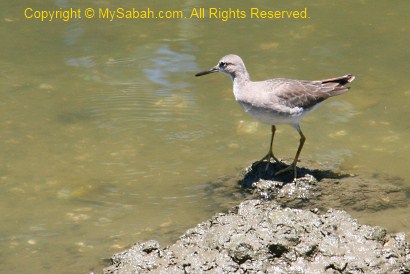
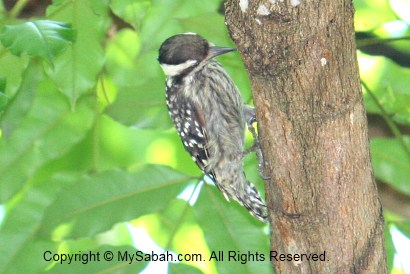
For example, someone have been claiming oil palm plantation is also a “forest” that is rich in biodiversity. The fact is – primary forest can host over 220* bird species, whereas oil palm only 12*. Well, most birds won’t agree with such bull shit.
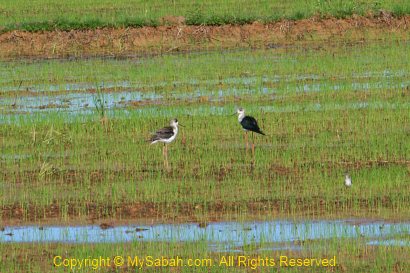
*Source: Phillipps’ Field Guide to the Birds of Borneo (by Quentin Phillipps, Karen Phillipps)
Related posts
Photos taken in Sabah, Malaysia Borneo



